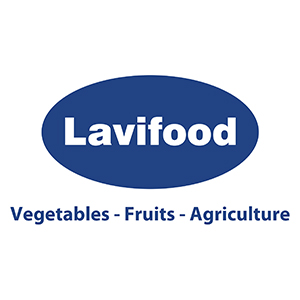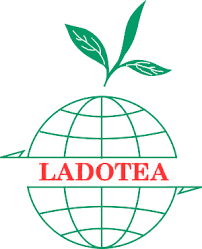- Giới thiệu
- Nhóm Công tác
- Tin tức
- Thông tin về FTA
- Tài Liệu
- Sự kiện
- Liên hệ
Prime Minister chairs conference to promote sustainable agricultural development in Mekong Delta
MARD collaborated with the Kien Giang Provincial People's Committee on March 6 to organize a conference on promoting sustainable agricultural development in the Mekong Delta region.

Try something newer, larger, and more daring
MARD Minister Le Minh Hoan emphasized at the conference's opening that regional provinces and towns must collaborate and promote production organization and cooperation models to ensure the Mekong Delta's sustainable development. Each city must take proactive measures to improve its connectivity and development atmosphere. Although land can be fragmented and administrative boundaries separated, thinking and economic space cannot.
Coordination along commodity chains and regional and sub-regional linkages between communities must be focused right at the beginning of the crop, rather than focusing on post-harvest agriculture. It is time for the delta to think bigger, bolder, and more differently in order to utilize the land's vast potential.
Recently, the Mekong Delta area has seen the emergence of several forms of ecological, integrated, multi-value agriculture growth. The economic model under the forest canopy, the shrimp-rice model in Ca Mau peninsula, the model of converting from rice monoculture to multi-cropping and intercropping has aided farmers in Dong Thap Muoi and Long Xuyen Quadrangle in gaining additional income, as has the production model adapted to drought and salinity in coastal provinces. The initiative "One commune, one product" is locally driven, effectively balancing indigenous resources and indigenous cultural values.
Numerous significant firms and corporations have also launched interregional initiatives, promising to maximize the potential of all participants. This is a good indicator of the Mekong Delta's creativity, activity, and vitality. The issue is that we must establish connections and spread values.
Regional connectivity in the Mekong Delta is more than a sum of population, area, and visible sources across 13 provinces and cities. They are, above all, openness, thinking linkages, unseen and endless resources, establishing a harmonic relationship between "State - Market - Society," finding new impulses, and establishing a new development space.
Deputy Minister of MARD Tran Thanh Nam emphasized that the Mekong Delta is a major agricultural center in terms of rice production, fruits, farming, fishing, and seafood processing, contributing significantly to the country's agro-forestry-fisheries production. Simultaneously, this area is home to the Mekong Delta's primary economic region, which includes four provinces and cities: Can Tho, An Giang, Kien Giang, and Ca Mau. This is a critical location for biotechnology transfer, seed supply, logistical technical services, agricultural processing, and export for the entire Mekong Delta.
In 2021, the added value of total agricultural products in the Mekong Delta climbed by 1.6 percent, accounting for 32.2 percent of the total product's added value in the area and 31.3 percent of the total agricultural product's added value in the country. The Mekong Delta leads the country in rice, brackish shrimp, tra fish, and fruit production, with 24.5 million tons of rice (55.4 percent of total production), 0.78 million tons of shrimp (83.5 percent), 1.47 million tons of pangasius (98 percent), and 4.3 million tons of fruit (accounting for 60 percent).
Concentrating development resources
Rural development and new rural regions have received attention and have created a number of positive outcomes, including an increase in the living standard of rural residents and an improvement in their living conditions. The national target program for rural area development has produced exceptional outcomes. By the end of 2021, 69.6 percent of communes would have reached the benchmark, an average of 16.9 criteria per commune, and 37 district-level units would have satisfied the new rural standards. In two areas, Can Tho city and Bac Lieu province, all communes fulfill the new rural requirements.
Agricultural and rural infrastructure has been invested in to support agricultural expansion and rural transformation. The channel system has been synchronized throughout time, with 15,000 kilometers of major and grade I canals and 77,500 kilometers of grade II and III canals. A system of irrigation works and dike systems has been established, as well as infrastructure for water supply and fishing port operations, including storm shelters for fishing vessels.
The leader posed questions, with such potential and advantages, why is the Mekong Delta region still underdeveloped and growing in an unsustainable manner? Which shortcomings and weaknesses have hindered this region's development?
The Prime Minister emphasized the importance of establishing institutions first in order to develop the Mekong Delta. When it comes to particular product planning, it is necessary to prioritize investments in infrastructure development, social infrastructure, transportation, energy, and digital infrastructure... Concentrate development resources, public-private partnerships, and internal development resources. Internal resources such as people, nature, and cultural traditions are critical. Prioritize the use of science and technology for the purpose of increasing labor productivity.
"The Mekong Delta must be a unified entity; its 13 provinces and cities cannot exist in isolation, but must complement and connect one another. Production must be market-driven. We must take proactive measures to adapt to climate change. Agriculture cannot thrive without a processing sector and associated services ", according to the Prime Minister.
Source: Nongnghiep.vn
Tin liên quan
PSAV Attends the 30th Anniversary Celebration of Cargill Vietnam2025/10/23
Plant health management helps increase coffee yield up to 15%2025/10/16
An Giang to host 2025 OCOP forum for sustainable development2025/09/25
Viet Nam and France foster cooperation on blue economy and sustainable environment2025/09/29
Agriculture and Environment exhibition ready for National celebration2025/08/27



 Điều lệ hoạt động
Điều lệ hoạt động



















































